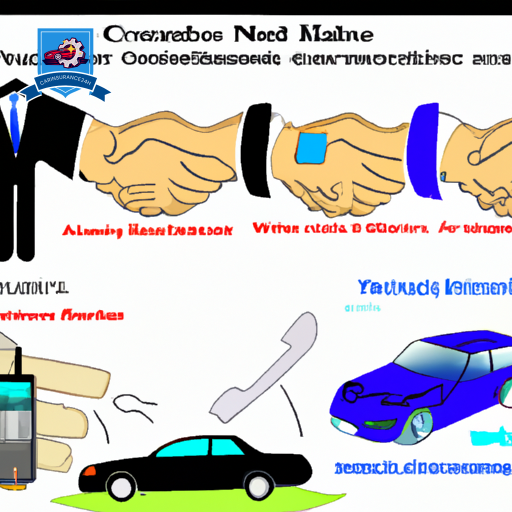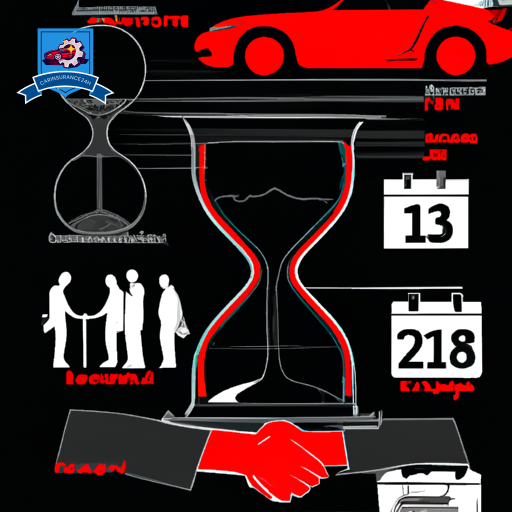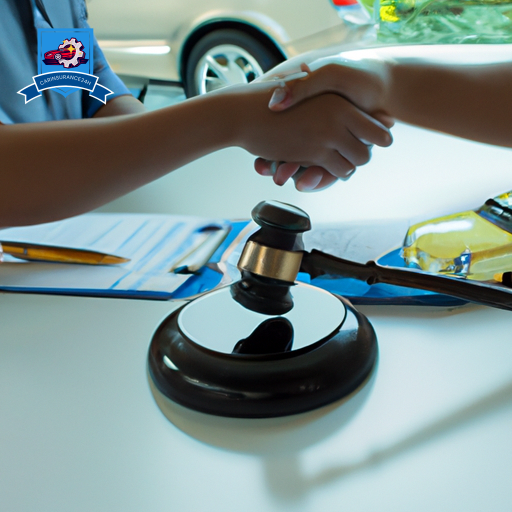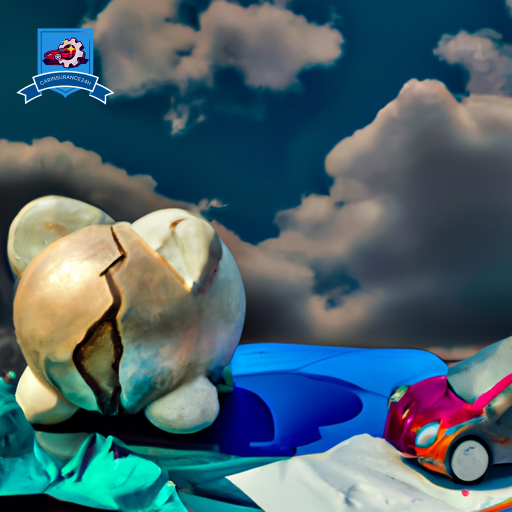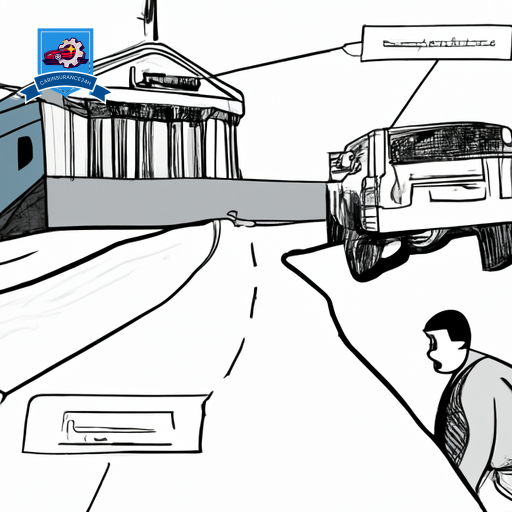Upon filing a car insurance claim, policyholders start on a multi-step process that begins with the claim’s assessment. This initial phase involves the insurance company reviewing the claim to ascertain its validity and scope of coverage.
Subsequent steps include a meticulous damage inspection conducted by an adjuster, followed by an estimate of repair costs that must receive approval before proceeding. The intricacies of these procedures, from the initial assessment to the final settlement and payment, are pivotal in determining the outcome of the claim.
Understanding the nuances of each step can greatly influence one’s approach to traversing this complex process, thereby underscoring the importance of grasping what lies ahead.
Claim Assessment Initiation

Initiating a claim assessment is the first critical step in the process of seeking compensation after a vehicular accident. This preliminary phase involves thorough preparation and organization, beginning with the compilation of claim documentation. Such documentation typically includes a detailed account of the incident, photographic evidence of the damage, a copy of the police report, and any witness statements. These documents serve as the foundation for the claim, providing a factual base upon which the insurance company can evaluate the validity and extent of the claim.
Following the accumulation of necessary documents, a policy review is conducted. This involves a meticulous examination of the claimant’s insurance policy to ascertain coverage details pertinent to the accident. The policy review aims to clarify the scope of coverage, including deductibles, limits, and any exclusions that may affect the claim. Understanding these aspects is critical for both the claimant and the insurance provider, as it sets the framework for the assessment process.
In addition, the policy review stage often involves initial communication between the claimant and the insurance company. During this interaction, the insurer may request additional information or clarification on the submitted documents. It is also an opportunity for the claimant to ask questions regarding the claim process, coverage, and potential outcomes.
Damage Inspection Process

Following the initiation of a claim assessment, the next critical step in the car insurance claim process is the Damage Inspection Process. This phase begins with scheduling the inspection, a key procedure that safeguards a timely and orderly evaluation of the vehicle’s condition.
Evaluating the damage accurately is crucial for determining the claim’s validity and the extent of the insurance company’s liability.
Scheduling the Inspection
Once your car insurance claim is filed, the next critical step involves scheduling an inspection to assess the extent of the vehicle’s damage. This process requires careful coordination and preparation to guarantee a thorough and accurate evaluation.
Here’s what you need to know:
-
Inspection Appointment: Promptly contact your insurance provider to arrange an inspection date. Availability may vary, so it’s wise to do this early to avoid delays in your claim process.
-
Documentation Gathering: Before the inspection, compile all necessary documents including your insurance policy, proof of identity, and any relevant receipts or reports you may have.
-
Preparation: Ensure the vehicle is accessible and in a condition that allows for a detailed inspection. Remove any personal items that could obstruct the process.
This structured approach helps expedite the claim process by ensuring all necessary steps are systematically followed.
Assessing the Damage
During the damage inspection process, a trained professional evaluates the extent of harm to your vehicle to establish a basis for the insurance claim. This critical step is not only about determining the repair costs but also about safeguarding against insurance fraud, a concern that can considerably impact the industry and policyholders alike.
Through meticulous assessment, the inspector verifies the claim’s validity, ensuring that the damage reported aligns with the incident’s nature and scope. This process plays a pivotal role in maintaining the integrity of insurance transactions and can influence factors like policy renewal.
A thorough and honest evaluation helps in accurately adjusting claims, thereby facilitating a fair and swift resolution for both the insurer and the insured, reinforcing trust and reliability in the insurance process.
Estimate and Approval

After filing a car insurance claim, the next critical step involves obtaining an estimate for the repair costs, which must then be approved by the insurance company. This phase is pivotal as it sets the groundwork for the financial aspect of the claim process. It begins with coverage verification, ensuring that the policy is active and assesses whether the damage falls within the scope of the policy limits. The process is straightforward yet meticulous, requiring clear communication and documentation.
The estimate and approval process can be broken down into three key steps:
-
Coverage Verification: The insurance provider reviews the policy to confirm that it covers the type of damage incurred. This step is crucial as it determines the feasibility of the claim. Factors such as policy limits and deductibles are taken into account to understand the coverage extent.
-
Damage Assessment and Estimate: A professional assessor or an approved auto repair shop evaluates the damage to provide an estimate of the repair costs. This estimate includes parts and labor, aiming to restore the vehicle to its pre-accident condition.
-
Approval Process: Once the estimate is submitted, the insurance company reviews it alongside the policy details. The goal is to ensure the estimate is reasonable and falls within the policy’s coverage. Upon approval, the insurance company authorizes the commencement of repairs, setting the stage for the next phase of the process.
This structured approach ensures that both the policyholder and the insurance company are on the same page regarding the repair costs and scope of coverage, paving the way for a transparent and efficient claim resolution.
Repair Process

Following the approval of an estimate, the repair process begins, marking an important phase in restoring your vehicle to its pre-accident condition.
This process involves an initial damage assessment, the selection of a reputable repair shop, and ultimately, the completion and pickup of the vehicle.
Each step is essential to guarantee the quality and efficiency of repairs, thereby safeguarding the integrity and value of your automobile.
Initial Damage Assessment
Upon filing a car insurance claim, the initial step in the repair process involves a thorough damage assessment to determine the extent of repairs needed. This phase is critical for several reasons:
-
Policy Review: It guarantees the claimed damage is covered under the policy, preventing potential claim denial.
-
Accurate Estimation: Provides a detailed cost estimate for repairs, helping both the insurer and the insured manage expectations.
-
Documentation: Creates a detailed record of the damage, which is essential for the claim process and any possible disputes.
This initial assessment is pivotal in setting the course for the claim process. It involves meticulous inspection by a professional, guaranteeing that all parties have a clear understanding of the repair scope and costs, thereby minimizing misunderstandings and streamlining the repair process.
Choosing a Repair Shop
Selecting the right repair shop is an important step in the car insurance claim process, as it directly influences the quality and efficiency of vehicle repairs. When choosing a repair shop, consider both repair warranties and shop certifications. These factors are critical indicators of a shop’s commitment to quality and reliability.
Repair warranties guarantee the work performed, providing peace of mind and protection against future issues related to the repair. Meanwhile, shop certifications are a proof of the shop’s adherence to industry standards and proficiency in handling specific types of repairs. A shop with extensive certifications is likely to have technicians who are trained and experienced in the latest repair techniques, ensuring your vehicle is restored to its pre-accident condition effectively.
Completion and Pickup
Once the repair of your vehicle is completed, the final phase involves arranging for its pickup from the repair shop. This stage is critical and requires your attention to several important aspects:
-
Rental Car Return: If you’ve been using a rental vehicle, coordinate its return with the rental agency. This often coincides with the pickup of your repaired vehicle, to minimize any inconvenience.
-
Final Inspection: Conduct a thorough inspection of the vehicle repairs with the shop personnel. Validate all agreed-upon work has been completed to your satisfaction before leaving the premises.
-
Insurance Premium Adjustments: Post-repair, it’s prudent to discuss with your insurance agent any potential adjustments to your premium. The completion of repairs might influence your insurance rates, depending on the nature of the claim and the terms of your policy.
Settlement and Payment

After the insurance company assesses the damage, the settlement and payment process kicks off, marking a critical phase in the claim procedure. This stage involves determining the compensation amount and the method of payment to the policyholder. The outcome of the settlement can influence future interactions with the insurance provider, including aspects such as policy cancellation and premium adjustment. It is essential for policyholders to understand how their claim resolution might affect these factors. A claim could potentially lead to a reassessment of the policyholder’s risk profile, possibly resulting in changes to their insurance terms.
The insurance company, based on the assessment, will either issue a payment to cover the repair costs or, in the case of a total loss, provide a market-value compensation for the vehicle. The payment method typically follows the terms outlined in the insurance policy, which might include direct payment to a repair shop or a lump sum to the policyholder. It is crucial for policyholders to review their policy documents to understand the specifics of how settlements are handled, including any deductibles that must be paid out of pocket.
During this phase, clear communication with the insurance adjuster is paramount. Policyholders should ask questions about any aspect of the settlement that is unclear, including how the payment was calculated and the timeline for receiving compensation. Understanding these details helps ensure that the settlement process is transparent and that policyholders receive the full benefits entitled under their insurance policy.
Post-Claim Follow-up

Following the settlement and payment of a car insurance claim, initiating a thorough post-claim follow-up is an important step for policyholders to guarantee all aspects of their claim have been resolved satisfactorily. This process ensures that the claim status is accurately updated and any necessary policy adjustments are made to reflect the new circumstances. Engaging in a detailed follow-up can safeguard against potential discrepancies or misunderstandings that may affect future claims or coverage.
To navigate the post-claim follow-up effectively, policyholders should consider the following steps:
-
Verify Claim Closure: Be sure that the insurance company has officially closed the claim. This involves confirming that all payments have been made and that there are no outstanding issues or documentation required. It’s essential to have written confirmation of the claim’s closure to avoid any future disputes.
-
Review Policy Adjustments: After a claim, it’s possible that your policy may undergo adjustments. These could include changes in premiums, deductibles, or coverage limits. Review any modifications carefully and discuss with your insurance agent to understand their impact on your policy. This is an opportune time to assess whether your current coverage still meets your needs or if adjustments are warranted.
-
Document Communication: Keep a detailed record of all communications with your insurance company regarding the claim and post-claim follow-up. This includes emails, letters, and notes from phone conversations. Having a comprehensive record can be invaluable in clarifying misunderstandings or in case of disputes.
Conducting a meticulous post-claim follow-up is instrumental in maintaining the integrity of your car insurance policy and ensuring your continued peace of mind as a policyholder.
Frequently Asked Questions
How Will Filing a Claim Affect My Insurance Premium Rates in the Future?
Filing a claim initiates a journey into the domain of risk assessment, where insurers recalibrate premium calculations. This meticulous process, shrouded in analytical rigor, often results in adjusted rates, reflecting your evolving profile as a policyholder.
Can I Choose Not to Proceed With a Claim After Filing It, and if So, How?
Yes, policyholders can opt for claim withdrawal after filing. This process involves notifying the insurer about the decision to not proceed. It is important to understand the policy implications of such a withdrawal on future coverage.
What Are My Options if I Disagree With the Insurance Company’s Valuation or Repair Decisions?
If you disagree with your insurer’s valuation or repair decisions, options include claim escalation and, as a last resort, policy cancellation. It’s essential to follow a structured approach, presenting evidence to support your stance effectively.
How Long Do I Have to File a Claim After an Accident Occurs?
The time frame to file a claim after an accident is governed by the statute of limitations, which varies by jurisdiction. Immediate steps should be taken to guarantee compliance with these legal timelines.
Are There Any Specific Documents or Evidence I Should Keep After Filing a Claim for Future Reference or Potential Disputes?
It is essential to meticulously engage in document storage and evidence gathering post-claim filing. Retain all relevant documents, photographs, and correspondence to guarantee a robust defense in case of future disputes or inquiries.

